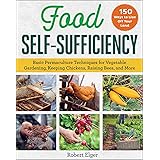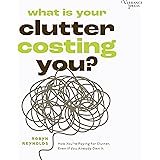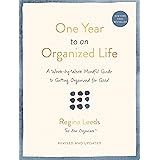The quest for a greener planet often feels like an enormous challenge, one that individual efforts might struggle to address. Yet, as the inspiring story in the video above reminds us, the true power to initiate significant change resides within each of us. The journey toward a more sustainable future begins not with grand gestures, but with consistent, mindful actions adopted in our daily lives.
This commitment to change forms the cornerstone of effective green living. By adopting responsible consumption and resource management, we collectively transform the global landscape. Our collective efforts are essential in nurturing a vibrant and healthy Earth for future generations.
Embracing Sustainable Practices: The Foundation of Green Living
The concept of green living is straightforward: it is about adopting habits and choices that minimize our environmental impact. This approach conserves natural resources and reduces pollution, fostering a healthier ecosystem. The video highlights five key areas where individuals can make a substantial difference, demonstrating that proactive engagement yields powerful results.
1. Mastering Recycling and Waste Reduction
One of the most immediate and impactful steps in sustainable living involves efficient waste management. Recycling redirects valuable materials from landfills, preserving precious space and reducing environmental strain. For instance, recycling a single aluminum can saves enough energy to power a television for three hours, a significant energy conservation.
Furthermore, responsible waste reduction extends beyond simply sorting recyclables. This practice includes minimizing single-use items and choosing products with minimal packaging. Consumers can significantly reduce waste by opting for reusable bags, water bottles, and coffee cups. This shift towards reusable alternatives represents a practical step in green living.
2. Protecting Our Trees: Reducing Paper and Wood Consumption
Trees play a critical role in maintaining ecological balance, acting as the Earth’s lungs by absorbing carbon dioxide and producing oxygen. They also provide vital habitats for countless species. Therefore, conserving trees remains a crucial aspect of environmental protection and sustainable practices.
Individuals can contribute to tree preservation by consciously reducing their paper and wood consumption. For example, before printing documents, consider if a digital copy suffices; this simple action can save numerous sheets of paper. Utilizing both sides of paper when printing, selecting recycled paper products, and supporting sustainable forestry initiatives further support this goal. Many studies indicate that using recycled paper can reduce energy consumption by up to 60% compared to virgin paper production.
3. Saving Energy: Enhancing Home Energy Efficiency
Energy consumption significantly contributes to carbon emissions, impacting global climate patterns. Therefore, implementing energy-saving measures is paramount for a greener lifestyle. The video emphasizes practical ways to reduce electricity use, translating into both environmental benefits and reduced utility bills.
Simple habits like turning off lights when leaving a room and unplugging electronics when not in use can yield substantial energy savings. Modern advancements offer even more effective solutions. Upgrading to LED bulbs, for example, consumes up to 85% less energy than traditional incandescent bulbs and lasts much longer. Investing in energy-efficient appliances and utilizing smart thermostats to regulate home temperatures are also effective strategies for reducing your carbon footprint.
4. Conserving Water: Essential for a Sustainable Future
Water, an indispensable resource, faces increasing threats from pollution and overconsumption. Conserving water is a critical component of green living, especially in regions experiencing drought or water scarcity. Each drop saved contributes to the larger goal of water security.
Practical steps include installing low-flow showerheads and toilets, which can significantly reduce water usage without compromising performance. Repairing leaky faucets and pipes promptly prevents unnecessary water waste, potentially saving hundreds of gallons annually. Additionally, collecting rainwater for garden irrigation or utilizing gray water systems in homes further promotes responsible water management. Data suggests that fixing household leaks can save homeowners about 10% on their water bills.
5. Building Green Homes: The Next Generation of Sustainable Living
The concept of a green home represents the pinnacle of sustainable living, integrating eco-friendly design and technology into the very structure of our residences. These homes are engineered to minimize environmental impact throughout their lifecycle, offering enhanced energy efficiency, improved indoor air quality, and reduced resource consumption. This forward-thinking approach to housing is gaining significant traction globally.
Green homes frequently incorporate advanced features such as solar panels for renewable energy generation, superior insulation to reduce heating and cooling demands, and water-efficient landscaping. The use of sustainable building materials, like reclaimed wood or recycled steel, further diminishes the environmental footprint. Studies indicate that homes built to green standards can use 20-30% less energy than conventional homes. These innovations not only provide a healthier living environment but also significantly lower utility costs, making green homes a smart investment for both residents and the planet.











